Summer afternoons in Dubai can turn a bedroom into a sauna and a living room into a blinding glare box. That is why choosing the best blackout curtains quickly tops most home‑improvement checklists. Within the first week of installation, residents often notice darker rooms, lower A C runtime, and a welcome dip in their DEWA bill. Blackout panels work by pairing tightly woven fabric with light‑blocking liners that stop heat transfer at the glass. Recent field tests by the U.S. Department of Energy show well‑fitted curtains can cut window heat gain by up to 33 percent. This guide dives deep into how blackout curtains solve Dubai‑specific problems, the differences between bedroom and living‑room needs, and the precise features you should demand before buying. Whether you crave hotel‑level darkness for better sleep or a chic fabric that complements your décor, you will find the answers—and the curtain style—here. For anyone hunting the best blackout curtains at a sensible price, read on.
Best Blackout Curtains for Bedrooms & Living Rooms
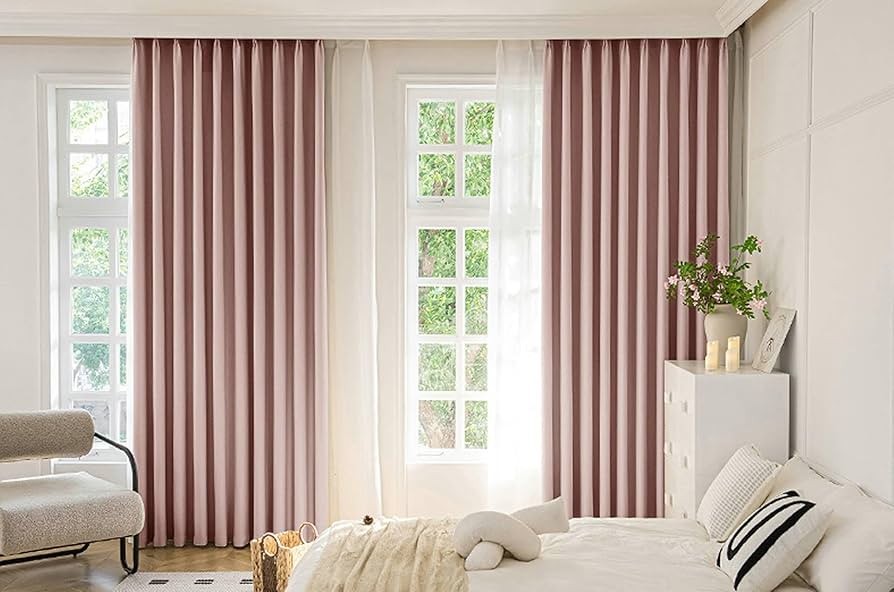
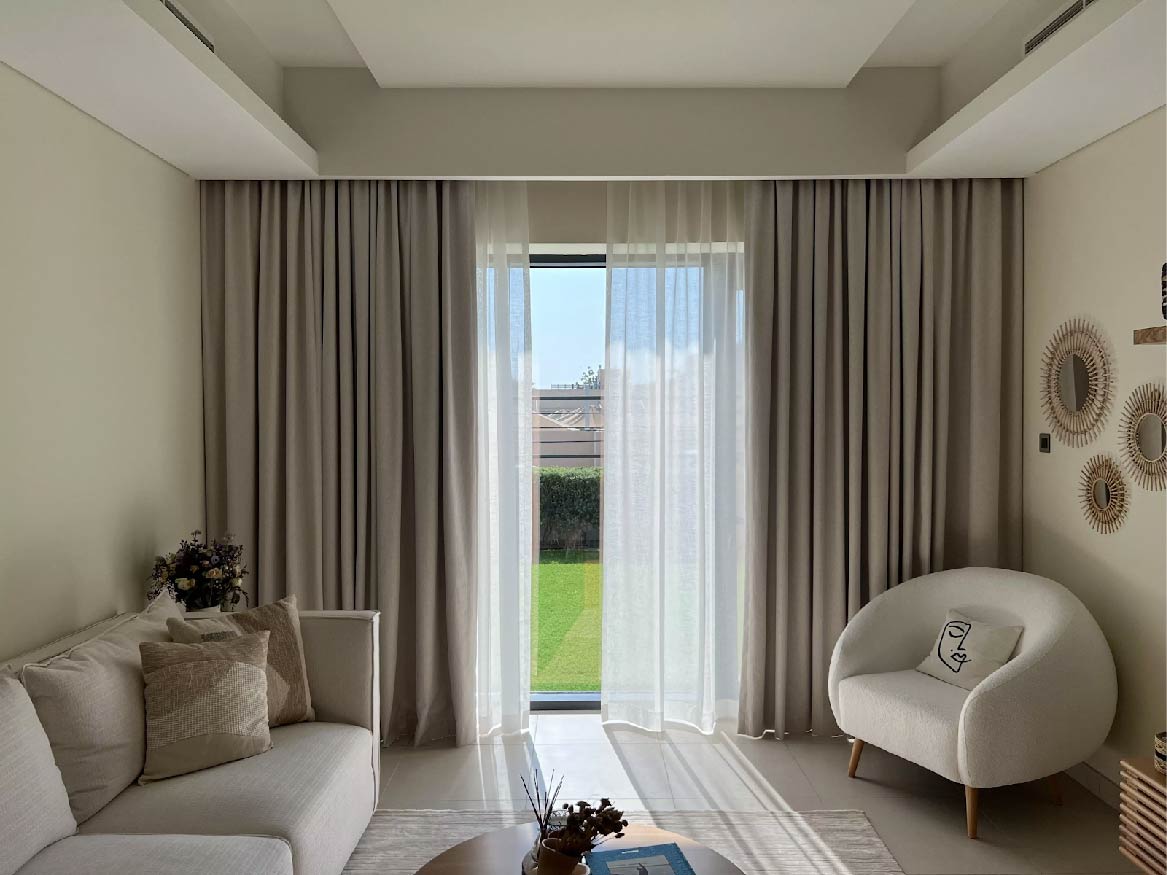
Why Blackout Curtains Are a Must for Dubai Homes
Blackout curtains are more than a décor upgrade in the UAE—they are a climate survival tool. Temperatures often exceed 40 °C, and cooling can swallow 70 percent of household electricity during peak months. Adding a dense curtain layer helps insulate single‑pane windows common in older flats.
For homeowners and renters in Dubai, blackout curtains offer immediate cooling relief and lowered monthly costs. Unlike double‑glazed retrofits, they specifically address runaway summer bills by reflecting solar radiation. This makes them valuable for tenants who cannot alter building façades.
For interior‑design‑conscious individuals, blackout fabrics come in matte linen or velvet finishes that frame windows elegantly while hiding hardware. Unlike flimsy sheers, they cover the rod line and create a cohesive backdrop for statement furniture. This visual appeal makes curtains as important as artwork in open‑plan living spaces.
Add smart scheduling—closing panels at noon and reopening after sunset—and you gain passive insulation with zero energy draw. By choosing the best blackout curtains you create comfort without compromising style.
Do blackout curtains keep the room cooler?
Yes—properly lined blackout curtains lower room temperature by 2–4 °C. They stop infrared radiation, reduce convection at the glass, and trap a stagnant air layer that resists heat flow. A 2024 Masdar City villa study recorded a 38 percent cut in peak cooling demand when blackout curtains were paired with ceiling fans. In practice, that means your thermostat can hold 24 °C instead of 22 °C, trimming kilowatt hours every afternoon.
Key Differences Between Bedroom and Living Room Curtain Needs
Bedrooms demand near‑total darkness and acoustic calm, while living rooms balance glare control with daytime aesthetics. Bedroom blackout curtains should block ≥ 99 percent of incoming light and incorporate a noise‑absorbing weave. Triple‑weave polyester or velvet excels here. In contrast, living room blackout curtains can use lighter cotton blends paired with decorative sheers, allowing filtered light when privacy is not critical.
For people seeking better sleep, blackout curtains for sleep offer melatonin‑friendly darkness and reduce dawn warmth. Unlike eye masks or portable fans, they address both light and heat in one step, making them valuable for shift workers or student renters on tight budgets.
For users comparing curtain options by room, blackout panels outperform roller shades on side‑gap coverage. In living rooms with sliding doors, ceiling‑mounted tracks let curtains glide without snagging on furniture, creating a seamless look during gatherings.
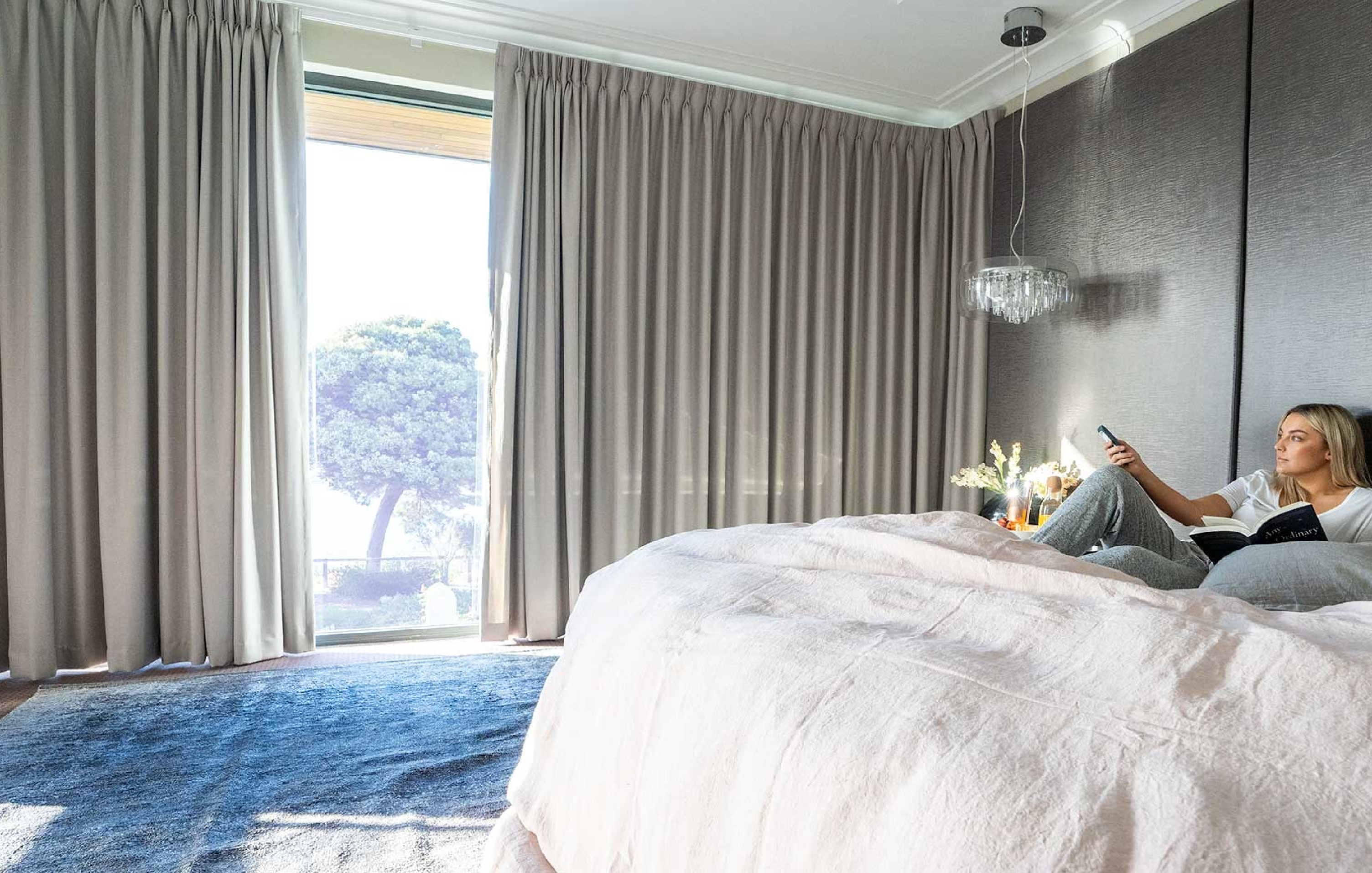
What are the best blackout curtains for bedrooms?
Choose heavyweight microfiber with a white thermal backing.
- Look for bedroom blackout curtains rated at 100 percent blackout.
- Opt for floor‑to‑ceiling length to block sunrise glow.
- Select wrap‑around rods to eliminate edge leaks.
Brands offering magnetic side hems gain an extra star because they seal against wall drafts without visible weights.
Best Features to Look for in Blackout Curtains
| Feature | Why It Matters | Ideal Spec |
| Fabric GSM | Determines opacity and drape | ≥ 250 GSM |
| Thermal backing | Reflects solar heat | White acrylic foam |
| Noise layer | Dampens street sounds | Woven felt interliner |
| Header type | Affects light gaps | Wave or pinch pleat |
| Length & width | Prevents light bleed | 10 cm larger than frame |
| Washability | Keeps colours crisp | Machine‑wash cold |
| Warranty | Confirms quality | ≥ 5 years |
For interior‑design enthusiasts, linen‑blend fronts soften harsh walls, while hidden back tabs maintain clean header lines. Unlike budget grommet panels, wave tracks glide silently and pair well with home‑automation motors.
What’s the difference between blackout and room darkening curtains?
Blackout blocks 95–100 percent of light; room darkening cuts only 70–85 percent. Blackout uses dense triple‑weave fabric plus a light‑proof liner, whereas room‑darkening relies on heavier yarns without a liner. Choose blackout for bedrooms, media rooms, or blackout curtains for sleep, and room‑darkening for spaces where soft daylight is welcome but glare must drop.

Top Blackout Curtain Styles for Bedrooms
Style does not have to yield to function. Popular bedroom choices include:
- Wave‑header velvet panels – luxurious drape, perfect for hotel‑like ambience.
- Two‑layer sheers + blackout – flexibility to switch from daylight to zero‑light in seconds.
- Noise reducing curtains with quilted cores – ideal for apartments near Sheikh Zayed Road.
For people seeking better sleep, wave‑header velvet offers light absorption and muffled acoustics. Unlike blinds, they specifically address early‑morning glare by sealing both the head rail and side returns, which makes them valuable for late risers.
Do blackout curtains reduce noise?
Yes—multilayer blackout panels cut noise by 6–10 dB.
- Quilted microfibre or felt interliners absorb mid‑frequency traffic sounds.
- Full‑length coverage dampens echoes.
- Ceiling‑mounted tracks close the top gap where noise leaks in.
While they will not mute loud construction completely, they create a noticeably calmer sleep environment compared with sheer drapes.
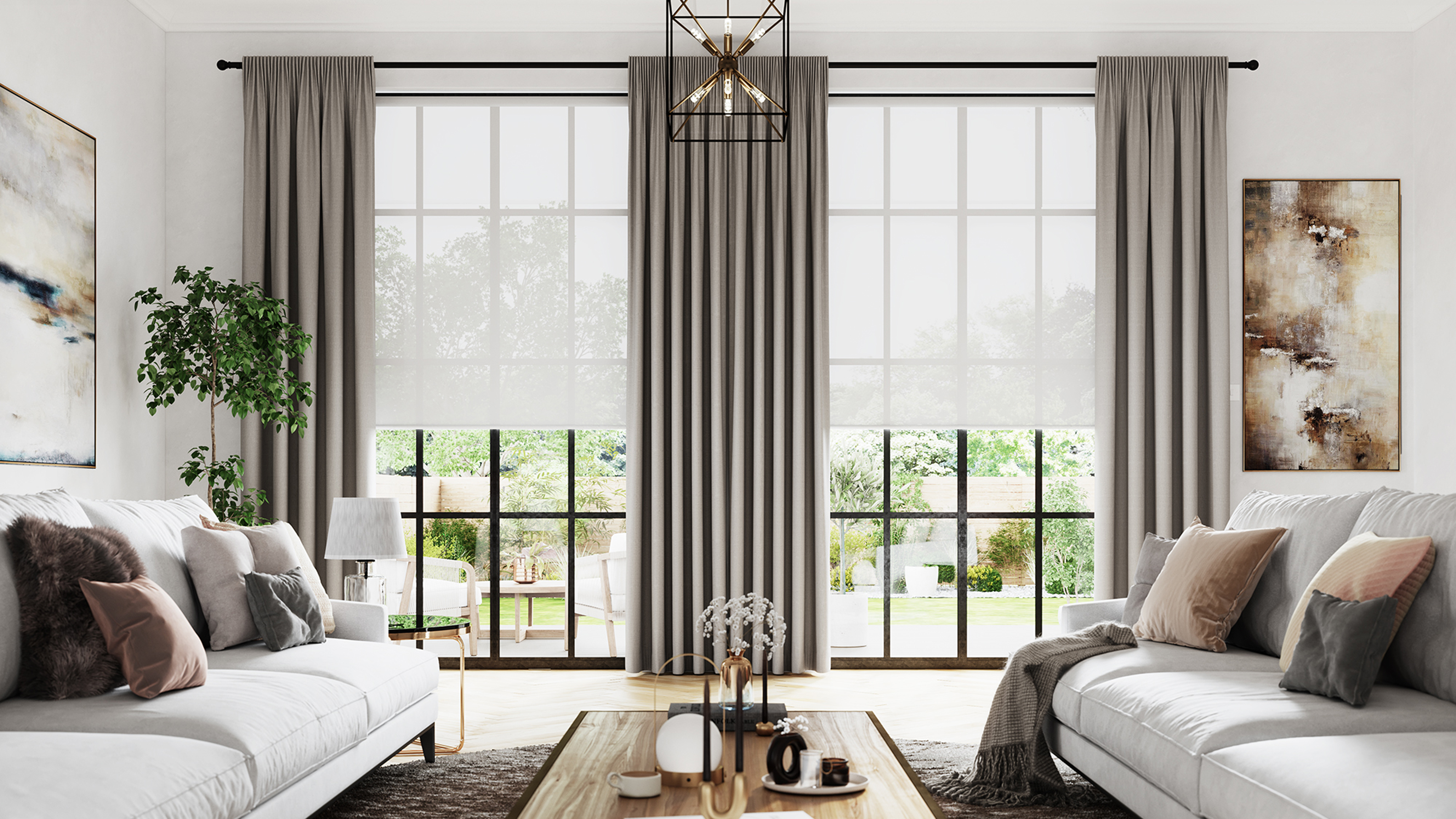
Best Blackout Curtain Ideas for Living Rooms
Living rooms need flexible lighting so the family can stream movies at noon and entertain at dusk. Consider these ideas:
- Thermal blackout curtains in pastel shades keep interiors bright while blocking heat.
- Living room blackout curtains paired with side tie‑backs reveal skyline views without removing panels.
- Layering sheer linen under blackout delivers hotel‑lobby elegance.
For interior‑design‑conscious individuals, choosing pastel thermal curtains avoids the cave effect. Unlike roller shades that drop suddenly, ripple‑fold tracks let fabric stack neatly behind crown moulding, which makes them ideal for open‑concept layouts.
Are blackout curtains good for living rooms?
Yes—they tame glare and protect furniture.
- Thermal linings reflect UV, shielding sofas from fade.
- Ripple‑fold headers tuck fabric behind cornices for cinema nights.
- Light pastel fronts keep rooms airy during brunch gatherings.
Plus, blackout curtains create a home‑cinema vibe during weekend binge sessions while lowering afternoon AC spikes.
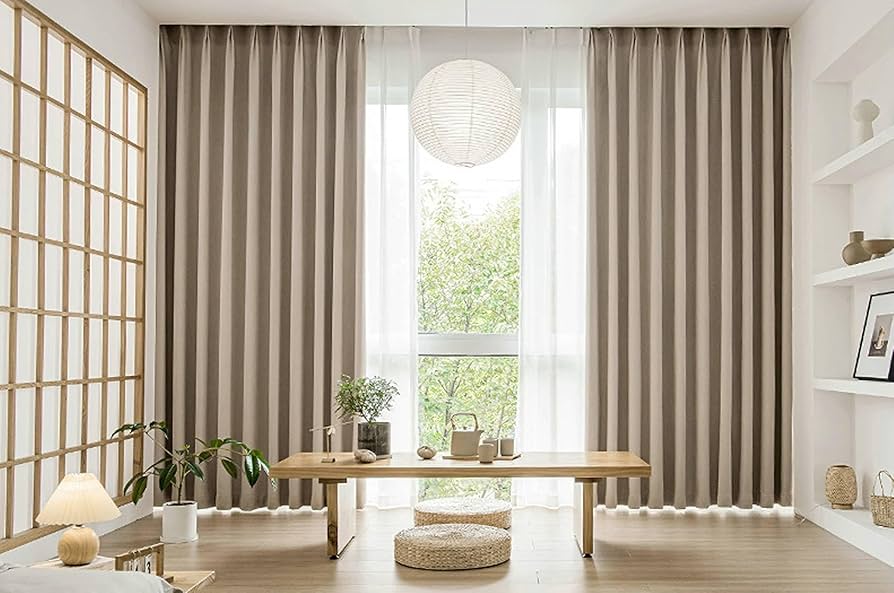
Custom vs Ready‑Made Blackout Curtains in Dubai
Dubai’s fast furniture market offers everything from off‑the‑rack to bespoke. Ready‑made panels from big‑box stores cost AED 250–500 per pair and install the same day. Custom blackout curtains, however, start around AED 800 per window due to tailored measurements, premium linings, and motor‑track options.
For users comparing curtain choices, custom panels fit arch windows in Arabian Ranches and match tricky wall heights. Unlike ready‑made sizes, they address awkward casements by integrating cut‑outs or motor tracks, which is crucial for villas with inconsistent ceiling drops.
For homeowners and renters in Dubai, custom blackout curtains Dubai services provide free measurements and sewing within a week, offering a quick yet tailored solution without structural renovation.
Do blackout curtains keep the room cooler?
Yes—Masdar’s 2024 study showed a 38 percent cooling‑load drop. Custom sizing enhances results by eliminating side gaps, whereas store‑bought lengths often sit 5 cm above the sill, leaking heat. Precise floor‑to‑ceiling coverage transforms curtains into a thermal shield—one more reason to choose the best blackout curtains.
FAQs About Blackout Curtains
What are the best blackout curtains for bedrooms?
Pick heavyweight microfiber with a foam liner and wave headers for complete blackout.
Are blackout curtains good for living rooms?
Yes—select pastel thermal blackout curtains to balance light and heat.
Do blackout curtains keep the room cooler?
Yes, they can drop interior temperature by 2–4 °C and lower DEWA bills.
What’s the difference between blackout and room darkening curtains?
Blackout blocks up to 100 percent of light versus 70–85 percent for room darkening.
Do blackout curtains reduce noise?
Yes—layered curtains reduce noise by 6–10 dB during peak traffic.
Additional Tips to Maximize Curtain Efficiency
- Mount rods 15 cm above and 20 cm wide.
- Seal edges with Velcro or magnets.
- Layer sheers for flexible daylight.
- Reverse schedule in winter to invite solar warmth.
- Keep fabric 3 cm off glass for an air gap.
- Opt for heat blocking curtains Dubai suppliers who lab‑test fabrics for solar reflection.
These six tactics ensure energy‑saving window treatments deliver maximum value.
Conclusion
Finding the best blackout curtains for your bedroom or living room boils down to three factors: precise fit, high‑GSM fabric, and a thermal liner. Install them once and you can enjoy darker naps, cooler movie nights, and AC savings that reach AED 1 440 each year. Ready to upgrade? Schedule a free on‑site measurement with a blackout curtains Dubai consultant and get fabric swatches matched to your décor. One visit is all it takes to see how customized panels combine comfort, style, and monthly savings in any Dubai homes.